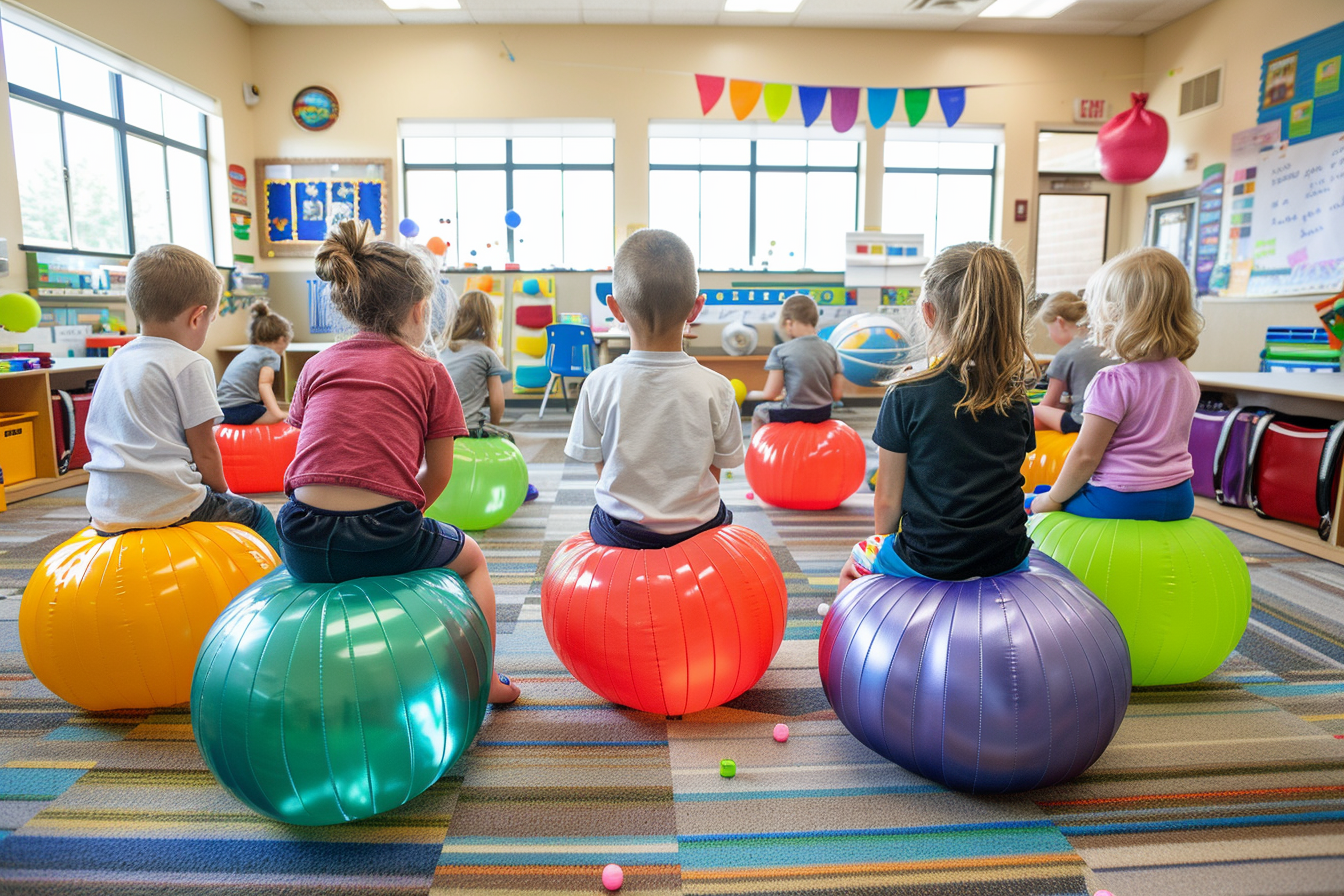Innovative Classroom Designs: Benefits of Collaborative Learning Spaces
Transform classrooms with flexible, tech-rich collaborative spaces that boost engagement, teamwork, and 21st-century skills.

Imagine a classroom buzzing with energy, where students eagerly collaborate, share ideas, and engage in hands-on projects. Collaborative learning spaces are revolutionizing education by transforming traditional classrooms into dynamic environments that foster creativity, teamwork, and active learning. These modern spaces are designed to meet the needs of 21st-century students, preparing them for the collaborative nature of today’s workforce.
In a world where innovation and adaptability are key, the design of our learning environments plays a crucial role in student success. Traditional rows of desks and teacher-centered instruction are giving way to flexible seating, technology-enhanced spaces, and interactive zones that encourage student participation. This post explores the principles, benefits, and practical applications of collaborative learning spaces, showcasing how rethinking classroom design can enhance student engagement and learning outcomes.
Join us as we delve into the world of collaborative learning spaces, examining real-world case studies and providing practical tips for educators and administrators. Discover how these innovative environments can transform your school and inspire your students to reach their full potential.
Understanding Collaborative Learning Spaces
Collaborative learning spaces are designed to foster interaction, teamwork, and a student-centered approach to education. These spaces are characterized by flexible seating arrangements, technology integration, and areas that support various collaborative activities. The goal is to create an environment that encourages students to work together, share ideas, and engage in active learning.
Enjoy science fiction? Check out my space books HERE on Amazon!
Historically, classrooms have been designed with a teacher-centered focus, where desks were arranged in rows facing the front. However, there has been a shift towards more dynamic and flexible learning environments that prioritize collaboration. Core principles of collaborative learning spaces include flexibility, interaction, and student-centered learning. By embracing these principles, schools can create a more engaging and effective learning environment that prepares students for the collaborative nature of the modern workforce.
Types of Collaborative Learning Spaces
Collaborative learning spaces can take various forms, each offering unique benefits for student interaction and engagement. Here are some common types:
- Flexible Seating Arrangements: Desks and chairs that can be easily rearranged to suit different activities. This flexibility allows students to move freely and work in groups of varying sizes, promoting a more dynamic and interactive learning experience.
- Technology-Enhanced Spaces: Classrooms equipped with interactive whiteboards, tablets, and other digital tools. These technologies support collaborative projects, digital literacy, and access to a wide range of resources.
- Maker Spaces: Areas dedicated to hands-on projects and creative problem-solving. Maker spaces provide students with tools and materials to design, build, and experiment, fostering innovation and critical thinking.
- Outdoor Learning Environments: Utilizing outdoor areas for collaborative learning activities. These environments offer a change of scenery and can inspire creativity and engagement with nature.
- Common Areas and Learning Hubs: Shared spaces for group work and interdisciplinary collaboration. These hubs are often located in central areas of the school and are designed to be accessible and inviting for all students.
By exploring these types of collaborative learning spaces, schools can create diverse and enriching environments that cater to different learning styles and needs.
Benefits of Collaborative Learning Spaces
Collaborative learning spaces offer numerous advantages, making them a valuable addition to modern educational practices. Here are some key benefits:
- Enhanced Student Engagement: Creating environments that motivate and inspire students to participate actively in their learning. Engaged students are more likely to retain information and perform better academically.
- Improved Collaboration and Communication: Facilitating teamwork and peer interaction helps students develop essential communication and interpersonal skills. These skills are crucial for success in both academic and professional settings.
- Increased Flexibility and Adaptability: Allowing for various teaching and learning styles ensures that the needs of all students are met. Flexible spaces can be easily reconfigured to support different activities, making them versatile and practical.
- Real-World Skills Development: Preparing students for collaborative work environments by providing opportunities to practice teamwork, problem-solving, and critical thinking. These skills are highly valued in the modern workforce.
- Better Learning Outcomes: Supporting diverse learning needs and improving academic performance. Collaborative spaces create an inclusive environment where all students can thrive.
By understanding these benefits, educators and administrators can better appreciate the value of rethinking classroom design to support collaborative learning.
Implementing Collaborative Learning Spaces
Implementing collaborative learning spaces requires careful planning and consideration of various factors. The first step is assessing the needs and goals of students and teachers. Understanding what types of activities and learning styles the space will support helps in designing an effective layout.
Designing flexible layouts involves creating spaces that can be easily reconfigured to suit different activities. This includes using movable furniture, creating open spaces, and incorporating areas for both individual and group work. Integrating technology is crucial for supporting modern learning methods. Ensuring access to digital tools and resources, such as interactive whiteboards, tablets, and reliable internet, enhances the learning experience and facilitates collaboration.
Involving stakeholders, including students, teachers, and community members, in the design process ensures that the space meets the needs of all users. Gathering input and feedback from these groups can provide valuable insights and foster a sense of ownership and buy-in. Providing professional development for teachers is essential for the successful implementation of collaborative learning spaces. Training teachers to effectively use the new spaces and integrate collaborative methods into their teaching can enhance the overall impact.
Overcoming Challenges in Collaborative Learning Spaces
Implementing collaborative learning spaces comes with its own set of challenges, but these can be effectively managed with strategic planning and collaboration. Budget constraints are a common challenge. Finding cost-effective solutions and securing funding from grants or community partnerships can help mitigate financial barriers.
Space limitations can also be a barrier. Maximizing the use of available space by designing multifunctional areas and using portable furniture can address this issue. Resistance to change is another challenge. Addressing concerns and building buy-in from teachers and administrators requires clear communication about the benefits and involving them in the planning process.
Maintaining flexibility over time is important. Ensuring that spaces remain adaptable and can evolve with changing educational needs involves regular reviews and adjustments. Balancing technology use is crucial. Integrating technology without overshadowing other learning methods requires a balanced approach and clear guidelines.
By addressing these challenges, schools can create a supportive and effective environment for collaborative learning spaces.
Case Studies
Implementing collaborative learning spaces has led to notable successes in various educational settings across the country. Here are three case studies highlighting the impact of these methods:
Case Study 1: Flexible Seating in a Wisconsin Elementary School
A Wisconsin elementary school introduced flexible seating arrangements, replacing traditional desks with movable furniture. The initiative allowed students to choose their seating based on the activity and their comfort, fostering a more dynamic and interactive learning environment. Teachers reported increased student engagement and participation, as well as improved classroom behavior.
Case Study 2: Technology-Enhanced Classrooms in a North Carolina Middle School
A middle school in North Carolina equipped classrooms with interactive whiteboards, tablets, and other digital tools. The technology integration facilitated collaborative projects and digital literacy. Students were able to work together on assignments, access a wide range of resources, and develop important technological skills. The program led to higher student motivation and better academic performance.
Case Study 3: Maker Spaces in a Kansas High School
A high school in Kansas created dedicated maker spaces for hands-on projects and creative problem-solving. These spaces were equipped with tools and materials for building and experimenting. Students engaged in interdisciplinary projects that encouraged innovation and critical thinking. The maker spaces helped students develop practical skills and fostered a culture of creativity and collaboration within the school.
Practical Tips for Educators and Administrators
Implementing collaborative learning spaces can be straightforward with the right approach. Here are some practical tips for educators and administrators to consider:
- Start Small and Scale Up: Begin with pilot projects before expanding. This allows for adjustments based on initial feedback and results.
- Utilize Multipurpose Furniture: Invest in furniture that serves multiple functions, such as desks that can be easily rearranged and storage units that double as seating.
- Create Zones for Different Activities: Designate areas for various types of learning, such as group work, individual study, and hands-on projects. Clearly defined zones help organize the space and support different activities.
- Encourage Student Input: Involve students in the design and layout of learning spaces. Gathering their input can provide valuable insights and foster a sense of ownership.
- Regularly Evaluate and Adjust: Continuously assess the effectiveness of the spaces and make necessary adjustments. Regular reviews ensure that the spaces remain relevant and effective.
These tips can help educators and administrators create successful and sustainable collaborative learning spaces.
Future Trends in Collaborative Learning Spaces
The future of collaborative learning spaces is evolving, with new trends enhancing their effectiveness and reach. Augmented Reality (AR) and Virtual Reality (VR) are becoming increasingly popular, using these technologies to create immersive learning experiences. AR and VR can transform how students interact with the curriculum, providing engaging and interactive educational opportunities.
Sustainable design is another emerging trend. Incorporating eco-friendly materials and practices into classroom design supports environmental stewardship and teaches students about sustainability. Global collaboration is expanding. Connecting classrooms with peers around the world for collaborative projects fosters global awareness and cross-cultural communication.
Check out our engaging printable posters. CLICK HERE to explore!
Personalized learning environments are gaining traction. Designing spaces tailored to individual learning preferences and needs ensures that all students can thrive. Community integration is becoming more prevalent. Creating spaces that serve both the school and the wider community enhances community engagement and resource sharing.
By staying updated with these trends, schools can continue to innovate and provide high-quality collaborative learning spaces for students.
Conclusion
Collaborative learning spaces are transforming education by creating dynamic, flexible environments that foster student engagement, teamwork, and real-world skills. By redesigning classrooms to support collaborative activities and integrating technology, schools can better prepare students for the demands of the 21st century.
As education continues to evolve, it is crucial for schools to embrace innovative classroom designs that promote collaboration and inclusivity. Overcoming challenges such as budget constraints and resistance to change requires strategic planning and community involvement. By leveraging future trends like augmented reality and sustainable design, schools can create learning environments that inspire and empower students, setting them up for success in an increasingly interconnected world.
Check out some of my latest science fiction books HERE on Amazon!
Transform your classroom into an inspiring and vibrant learning space with our beautifully designed printable posters! Perfect for engaging your students and enhancing your teaching environment, our poster bundles cover everything from historical philosophers to animals. CLICK HERE to explore our exclusive collections on Teachers Pay Teachers and give your students the motivational boost they need!
